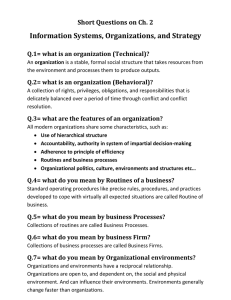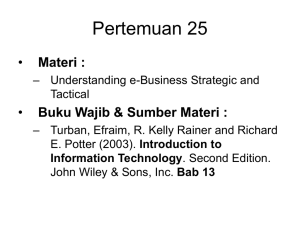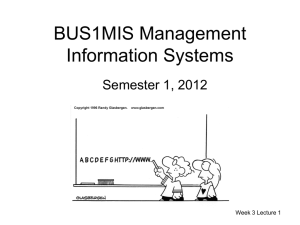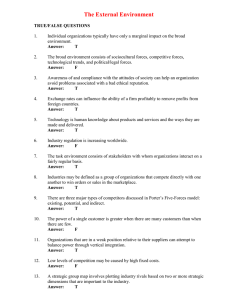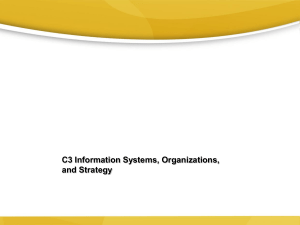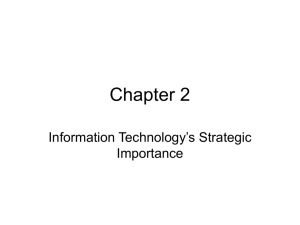PPT Porters Model
advertisement
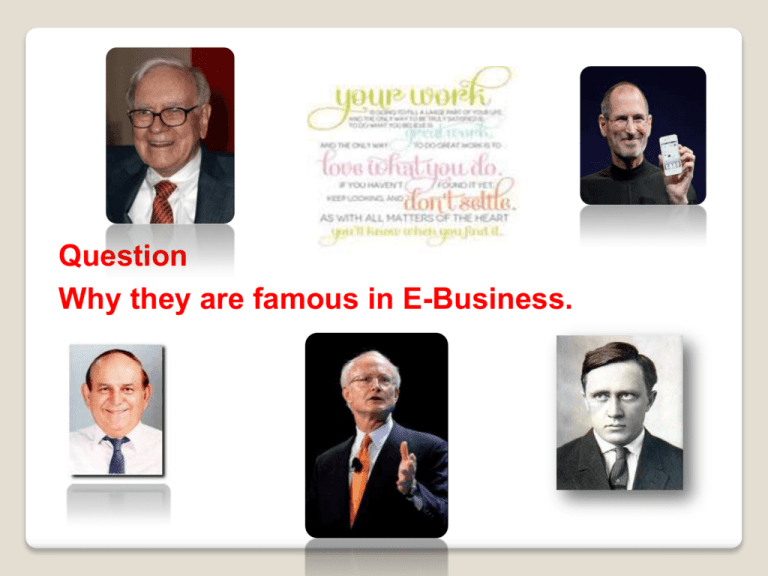
Question Why they are famous in E-Business. Michael Porter Harvard Business School 1980. He introduced competitive forces model - Five Competitive Forces Question Why do some firms become leaders within their industry? Discuss in class. • Why do some firms become leaders within their industry? • Provides general view of firm, its competitors, and environment • Five competitive forces shape fate of firm 1. 2. 3. 4. 5. Traditional competitors New market entrants Substitute products and services Customers Suppliers • Michael Porter’s competitive forces model Porter’s Competitive Five Forces Model In Porter’s competitive forces model, the strategic position of the firm and its strategies are determined not only by competition with its traditional direct competitors but also by four forces in the industry’s environment: new market entrants, substitute products, customers, and suppliers. Figure 3-10 Porter’s Competitive Five Forces Model 1. Traditional competitors All firms share market space with competitors who are continuously devising new products, services, efficiencies, switching costs 2. New market entrants Some industries have high barriers to entry, e.g. computer chip business New companies have new equipment, younger workers, but little brand recognition Porter’s Competitive Five Forces Model 3. Substitute products and services Substitutes customers might use if your prices become too high, e.g. iTunes substitutes for CDs 4. Customers Can customers easily switch to competitor’s products? Can they force businesses to compete on price alone in transparent marketplace? 5. Suppliers Market power of suppliers when firm cannot raise prices as fast as suppliers Internet completive advantage • The Internet’s impact on competitive advantage • Transformation, destruction, threat to some industries • E.g. travel agency, printed encyclopedia, newspaper • Competitive forces still at work, but rivalry more intense • Universal standards allow new rivals, entrants to market • New opportunities for building brands and loyal customer bases Internet completive advantage • Four generic strategies for dealing with competitive forces, enabled by using IT 1. Low-cost leadership 2. Product differentiation 3. Focus on market niche 4. Strengthen customer and supplier intimacy Internet completive advantage 1. Low-cost leadership • produce products and services at a lower price than competitors while enhancing quality and level of service. • E.g. Wal-Mart, Dell 2. Product differentiation • Enable new products or services, greatly change customer convenience and experience • E.g. Google, Land’s End, Apple iPhone Internet completive advantage 3. Focus on market niche (place or function) • Use information systems to enable a focused strategy on a single market niche; specialize. • E.g. Hilton Hotels 4. Strengthen customer and supplier intimacy’ • Use information systems to develop strong ties and loyalty with customers and suppliers; increase switching costs • E.g. Chrysler, Amazon

